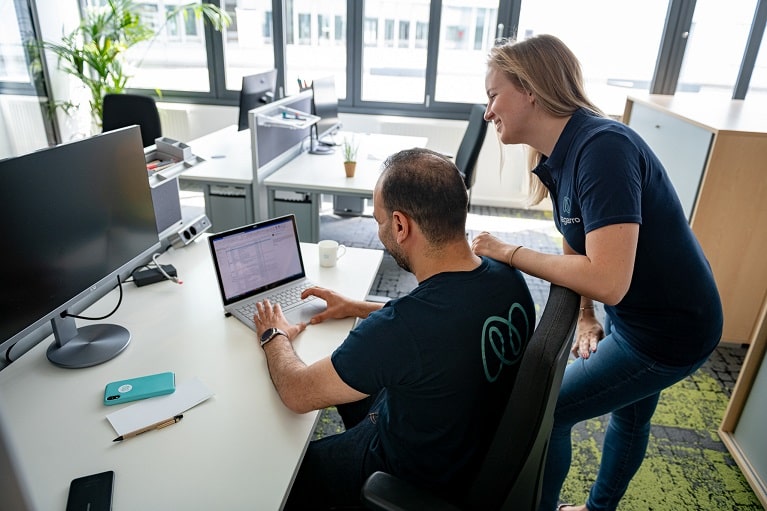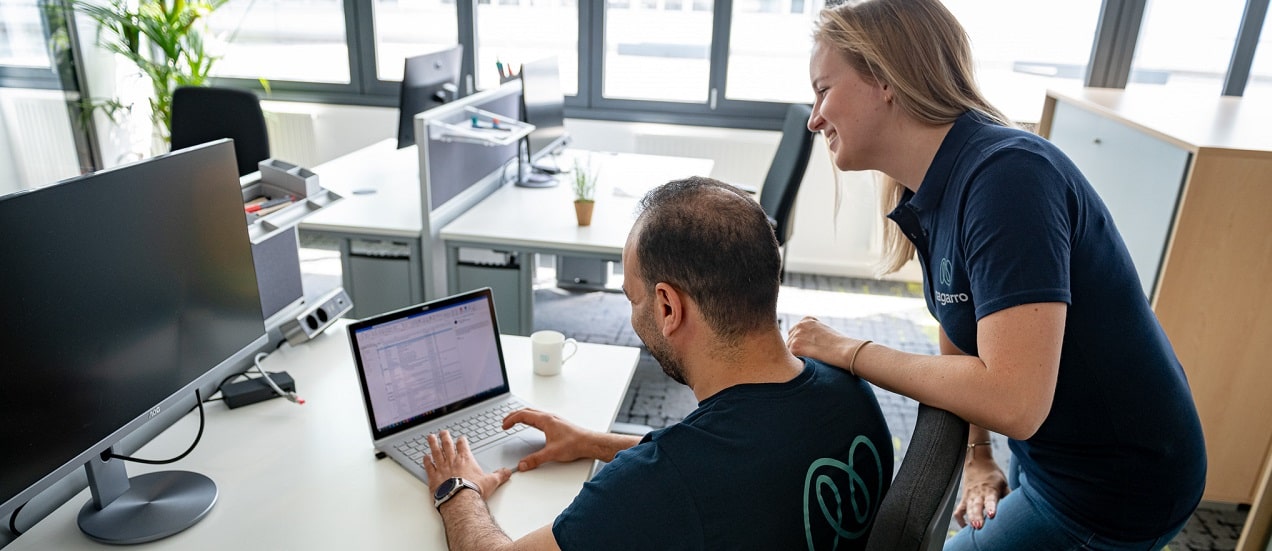In today’s world, most businesses rely heavily on online platforms and their respective services, making it imperative to ensure that their systems are highly available and reliable all the time. This is where SRE (Site Reliability Engineering) comes into place.
Site Reliability Engineering (SRE) has emerged as a discipline that addresses these challenges by combining software engineering principles with operations expertise.
What is SRE (Site Reliability Engineering)?
SRE refers to a set of principles and practices that incorporates different features of software engineering and applies them to infrastructure and operation problems that are faced during the development and maintenance process. SRE uses software tools to automate IT infrastructure tasks like provisioning & monitoring which helps in making the systems reliable, scalable & efficient.
How did SRE start?
SRE traces its origins to Google in the early 2000s, when the company faced unprecedented challenges in managing and scaling their complex infrastructure. Traditional operations teams were struggling to keep up with the demands of rapidly growing services. Google realized that a new approach was needed, one that incorporated software engineering principles to solve operational challenges. This is when Ben Treynor Sloss formed the first SRE team within Google. The rest, as they say, is history hiSRE!
Key Pillars for SRE
SRE focuses on some of the key pillars for reliability and stability of large-scale software systems:
.png?width=3125&height=1230&name=Blog%20Illustration%20for%20SRE%20The%20backbone%20of%20modern%20ecosystem%20(1).png)
- Reliability: SRE always defines SLI/SLO for the systems & uses it as a baseline to make systems more and more reliable. The SRE team also ensures that robust testing is performed to test the systems for prevention of any SLO/SLA breach.
- Culture: SRE culture is a set of values, practices, and principles that define how SRE teams work and interact with other teams and stakeholders. These teams and practices are most effective when aligned with a supportive corporate culture.
- Monitoring: Monitoring is crucial in SRE to gain visibility into the system's health and performance. SRE teams establish comprehensive monitoring systems that collect data on various aspects of the system, including performance metrics, error rates, and user experience. This data is used for proactive alerting, troubleshooting, and capacity planning.
- Reduce Silos: SRE aims to break any silos within the organization by combining the capabilities of multiple competencies across a single team. As SRE handles multiple capabilities and includes resources with mixed competencies, it’s very important that they cooperate, communicate, and collaborate in the right way.
- Automation: The success of an SRE team relies completely on how tasks such as provisioning, deployment etc. are automated. Automation allows teams to reduce manual toil, improve efficiency, and eliminate human error within the environments.
- Incident Management: One of the key focus areas of SRE is handling the incidents. This is precisely why the SRE team stresses on creating robust incident response to minimize failures. This involves developing runbooks, playbooks, and well-defined incident management workflows to facilitate quick detection, diagnosis, mitigation, and resolution of incidents.
How does SRE work?
The scope of an SRE team varies from organization to organization. At some places, the SRE team is responsible for handling only the infrastructure operations whereas somewhere else, the SRE team implements the setup along with some of the code development. Below are some of the day-to-day responsibilities of a typical SRE team:
- SRE team’s initial responsibility is to define SLI’s and SLO’s by collaborating with product or business stake holders. Once done, it can be taken up with the clients as well, who can act as a baseline for defining and agreeing on SLA’s.
- SRE team can implement the solution, thereby handling the operations of the complete end-to-end solution.
- SRE team sets up and maintains comprehensive monitoring and alerting systems to continuously collect data on service performance, health, and user experience.
- SRE team continuously aims to automate the manual stuff using multiple automation tools/services. Automation helps the SRE team in toil management so that they can focus on innovative tasks instead of following up with the repeated tasks.
- SRE team also gets involved in incident management by following a well-defined incident management process and works towards postmortems of the incidents and their respective learnings.
- Documentation is one of the key responsibilities of the SRE team. Good documentation ensures continuous learning is passed to the team members and helps in any of the future incidents/changes.
How can you get started with SRE?
It’s important that an organization understands the business requirements and the specific purpose of setting up an SRE team. Once these requirements and purposes are clear, organizations can implement the following step-by-step approach to set up an SRE team:
Start small: In case of multiple products/applications, start by picking up a specific application/product that the initial SRE team will manage.
Build your first SRE Team: Identify what technical/functional competencies are required for SRE team members and conduct interviews based on them.
Placing your first SRE Team: It’s very important for an SRE to be placed in an organization in such a way that it can scale and collaborate with multiple teams in future.
Inculcate culture: Culture is one of the major components for SRE success. It can be included in many ways like promoting cross department activities, trainings, encouraging communications, reducing physical barriers, etc.
Define what needs to be measured: One of the key things for SRE success is measurability and this is where components like SLI’s (Service Level Indicators), SLO’s(Service Level Objectives), and Error Budget come in. It’s important to identify the key KPI’s of an environment followed by defining the SLI’s & SLO’s. Once defined, the SRE team monitors the same to make sure it remains well within the defined limits.
Bootstrap your SRE: The first and foremost priority of SRE team is to enable monitoring of the complete system, automating the manual activities, and working towards high priority issues.
Scale up your SRE: Once the SRE team is mature enough to handle the issues and make the systems reliable, the next step is to scale up the SRE team to handle more and more applications/products.
Training & Feedback: Use the learnings of previous implementations/executions/changes etc. to improve within time. It’s also important to use those learnings as a baseline to train new members.
Engagement Models of SRE
Engagement models define how the SRE team will be set up and what kind of tasks the team will be handling. This is a very important part of SRE execution as it acts as a base for the team. Organizations must clearly understand the purpose of setting up an SRE team and should accordingly select the relevant SRE model from the ones described below:
.png?width=3125&height=714&name=Blog%20Illustration%20for%20SRE%20The%20backbone%20of%20modern%20ecosystem%20(2).png)
Kitchen Sink: This model is specifically for organizations looking to start the SRE journey. The exact scope of work is usually undefined here as the team picks up most tasks. This model sometimes acts as a POC model for setting up an SRE team.
Infrastructure: In this model, the SRE team mainly focuses on maintaining the reliability of the infrastructure. Some of the core areas include managing shared Kubernetes cluster, managing Cloud infrastructure, and maintaining CI/CD pipelines.
Product/Application: This model mainly focuses on managing specific applications/products with respect to specific business requirements. While such an SRE team remains more focused due to a well-defined scope of work, scaling can be an issue at times, with multiple applications/products coming up in the scope.
Embedded: In this model, SRE teams are embedded to specific projects, so that each project has its own specific SRE. With this model in place, SRE team members interact more with developers to have a clear picture of the complete setup.
Consulting: This can be a central team, primarily focusing on consulting of SRE services instead of working dedicatedly for any specific project only.
SRE at Nagarro
At Nagarro, we harness SRE’s deep technical knowledge and cutting-edge methodologies to ensure seamless digital experiences by optimizing performance, fortifying reliability, and swiftly mitigating disruptions. We engineer stability in the digital realm, thus empowering uninterrupted innovation.
Our SRE professionals leveraging their expertise to engage in tailoring designs and estimates to meet clients' unique requirements. They orchestrate seamless implementation and delivery by deconstructing tasks into smaller components, meticulously estimating each aspect for precision.
In terms of consulting, our SRE experts assess any organization's practices, processes, and systems to identify strengths, weaknesses, and areas for improvement by indulging in a highly interactive and hands-on approach.
Interested how we used SRE to reduce downtime by 90% , with 75% faster incident resolution? Check out this success story!
Conclusion
Site Reliability Engineering is a crucial discipline for modern organizations that rely on technology to deliver their products and services. By combining software engineering practices with operational expertise, SRE ensures the reliability, scalability, and resilience of systems. It empowers organizations to proactively manage and improve their infrastructure, mitigate risks, and provide exceptional user experiences. Implementing SRE principles not only drives business growth but also fosters a culture of collaboration and continuous improvement. As technology continues to evolve, organizations that embrace SRE will be better equipped to navigate the complexities of the digital landscape and stay ahead of the competition.
Though SRE is a very important aspect for any organization, before defining an SRE team, it’s important that the organization must understand the purpose and need for Site Reliability Engineering and be clear about the business benefits it can bring to the organization.





